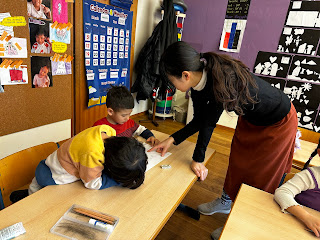What is CULTURE?
This week, we have broken down the different aspects of culture.
COUNTRY
Firstly, we identified the country they are from.
They were tested on their knowledge of their flag.
It was amazing to know that a lot of them know what their flags look like.
The color, symbols, and shapes that go with it.
We will continue to inquire by also understanding the features that the flag represent. The colors, symbols, the shapes.
For our transdisciplinary connection in math, preschoolers will go around the school to conduct a survey. We will find out information about the people at DSKI and how these affect our school's culture.
With their partner, they thought of different questions that they would like to ask their respondents.
They will survey the following questions:
Where (country) are you from?
What celebration is important for you and your family?
What is the traditional food in your country?
What clothes do you like to wear?
What values are important for you?
FOOD
"Why is there always so much food when there is a celebration?" - Mamoru
How can food shape our culture?
The students filled their plates with the different food they prepared or ate at home with their families. Then we identified the country of origin of these foods. They counted the food originally from their home country and compared it to the number of food from other countries.
They came up with the following reflection:
Some food can also be found in other countries.
A lot of people eat the same food even if they live in different countries.
Each country has its own specialties (menu) for breakfast, lunch and dinner.
We eat other country's food.
Sometimes you don't like or don't eat your country's own food.
Our CULTURE WHEEL in Preschool









Comments
Post a Comment